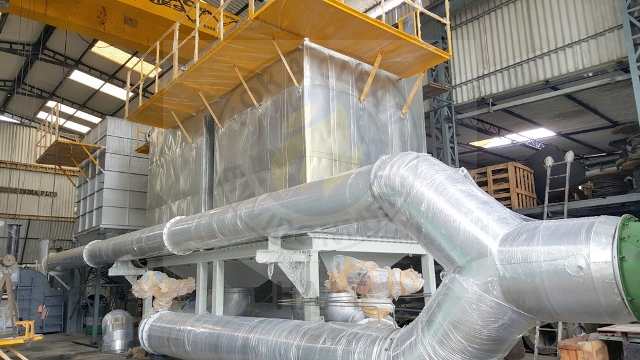
Clean Air Technology - Thermal Oxidisers
Across the world, there are people who follow the rules with respect to environmental legislation and then there are those who find short cuts. Mere action by the concerned authority to enforce the rules strictly is not enough, there has to be a mindset change in realizing that pollution control equipment do in fact benefit production and result in savings.
Many companies and organisations are disciplined enough and do follow the rules. There are rules for biomedical waste, municipal solid waste and industrial hazardous waste disposal, but in many countries, including India, there are no clear cut rules yet for handling exhaust gases coming out of production processes.
Process off gas and spot vent containing VOCs from pharma and chemical industries, VOC containing hot air from the printing industry, paint shops, carbon pitch preheating; live bacteria and VOC containing air from the food industry, VOC containing air from automobile manufacturers, sewage treatment plants and oil emulsification processes, refineries, etc. These are just a representative list of areas / applications / industries. There may be many more industries who release polluted air/gas to the atmosphere without treatment.
Even though there is no rule in place, it is heartening to note that many industries have taken the initiative to set up thermal treatment of these gases/air by installing Thermal Oxidisers of different types, depending on the type of waste gas, quantum, etc. meeting emission norms as set by global agencies.
Though commonly clubbed together, there are also several differences between fired heaters and thermal oxidisers. It is quite common to find that API 560, which is a standard for Fired Heaters in Refineries is also applied to thermal oxidisers. However, the primary difference between the 2 is that while a fired heater is used for heating process fluids, a thermal oxidiser is used to destroy VOCs and hydrocarbons and requires a lot of attention on designing it with the right turbulence, temperature, residence time, oxygen percentage, etc. If reducing pollutant levels is the goal, using a heater as a TO will not give the required results. Most thermal oxidisers need to be customised to meet specific project requirements.
Haat has supplied many Regenerative Thermal Oxidisers and Direct Fired Thermal Oxidisers to these industries and these are being put to use for the benefit of the environment and people who need to breathe clean air.
More information on these products is available here - RTO and DFTO


